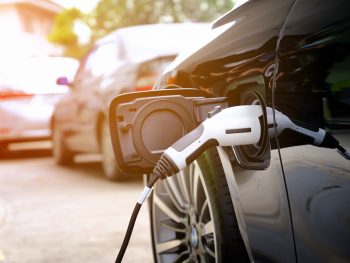DfT stats reveal 6% rise in UK’s public EV charging devices
The number of total public EV charging devices available in the UK rose 6% in the second quarter of 2022, new figures from the Department for Transport reveal.
 The data shows that as of 1 July 2022, there were 32,011 public electric vehicle charging devices available in the UK – up by 1,721 compared to 1 April 2022.
The data shows that as of 1 July 2022, there were 32,011 public electric vehicle charging devices available in the UK – up by 1,721 compared to 1 April 2022.
Of the total devices available, 5,974 were rapid chargers; up by 480 or 9%.
The new stats also show that since 1 July 2021, the number of public devices has increased by 31%, corresponding to 7,637 devices. The number of rapid devices increased by 31%, with an additional 1,423 public devices.
Aside from Northern Ireland, there was an increase in total and rapid devices across all regions of the UK in the second quarter of this year.
The North East had the greatest increase in total devices at 14.2%, whilst Scotland had the smallest increase at 1.2%. London also had the greatest increase in absolute number of devices at 462 devices, contributing to 27% of the increase in devices across the UK in this period. Northern Ireland saw a decrease in the number of charge points by 5.7%, this represents 20 devices.
For rapid chargers, the smallest percentage increase in the number of devices was in London at 3.3%. East of England had the largest percentage increase in rapid devices at 18.7%, corresponding to an increase of 82 rapid devices. Northern Ireland saw a decrease of 16% compared to April 2022, this attributes to a reduction of 4 rapid charge points.
But there is still an uneven geographical distribution of charging devices within the UK. Some UK local authorities have bid for UK government funding for charging devices, and others have not. Most of the provision of this infrastructure has been market-led, with individual charging networks and other businesses (such as hotels) choosing where to install devices.
London and Scotland had the highest level of charging provision per 100,000 of population as of 1 July 2022, with 116 and 55 devices per 100,000 respectively. In comparison, the average provision in the UK was 48 per 100,000.
Northern Ireland had the lowest level of charging device provision in the UK, with 17 devices per 100,000, followed by the North West and Yorkshire and the Humber with 27 and 29 devices per 100,000 respectively.
Looking at rapid devices, Scotland had the highest rate of provision of 14.2 rapid devices per 100,000, whilst the average provision in the UK was 8.9 per 100,000. Rapid device provision was lowest for Northern Ireland with 1.1 rapid devices per 100,000. North West and Wales were the second and third lowest regions both with 6.7 rapid devices per 100,000 respectively.
Progress but more work needed
Novuna Vehicle Solutions said the latest figures show much-needed progress in charging infrastructure but added that with thousands of new EVs continuing to hit the roads each month, the network is still failing to expand at the required pace, particularly outside of London.
To coincide with the data release, Novuna has today released research showing that the UK’s Metro Mayors, who are tasked with developing local EV charging infrastructure with a £250m annual fund, installed just 42 public charge points in 2021.
Jon Lawes, managing director, added: “The current shortfall in charge points is certainly not due to a lack of public funding. Our research shows that outside of London, the Metro Mayors have access to an annual £250 million capital investment fund designed to support the UK’s electrification strategy, yet collectively eight of our largest city regions in England have only installed 42 EV public charge points in 2021. The money is available, what’s required is the political muscle to deliver critical infrastructure at a regional level.”
And OC&C Strategy agreed that the rate of installation needs to increase dramatically to meet the Government’s 2030 targets.
Matt Wills, European head of forecourts and charging, commented: “Appetite for electric vehicles shows no signs of slowing down as consumers and fleets seek to transition to more sustainable modes of transport. This emphasises the importance of the UK’s EV charging infrastructure keeping pace with demand, and today’s figures demonstrate that welcome progress has been made over the last quarter. However, the current rate of installation will still see the Government fall well short of its target to have 300,000 public charge points by 2030.
“Existing and prospective EV owners have long cited the availability of chargers as a key concern or barrier to purchase, and these issues will continue to limit the uptake of these vehicles if the development of the network continues to lag despite the demand. Affordability and range anxiety are similarly strong concerns for prospective owners, but a greater provision of public charge points is a sure-fire way to provide motorists with the assurance to purchase an EV with confidence.”

